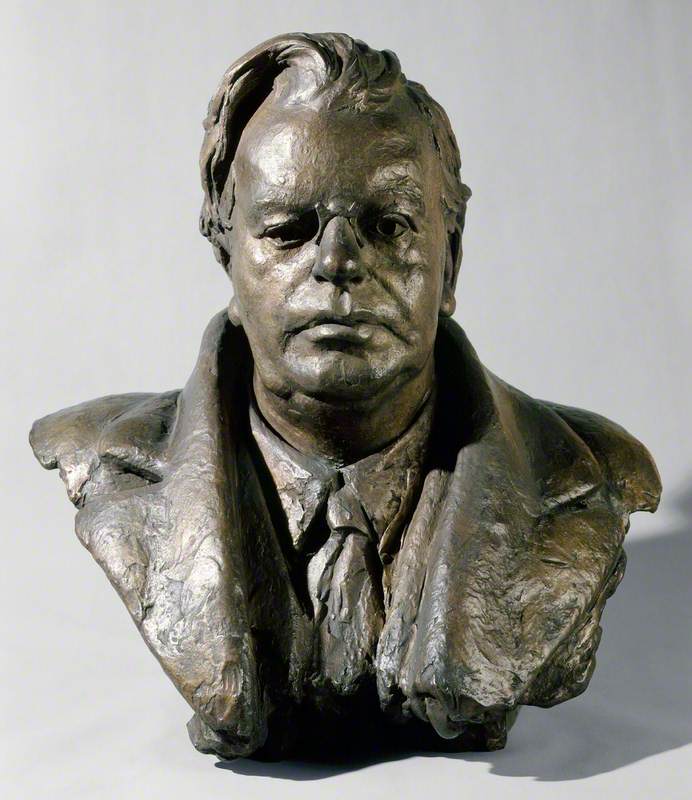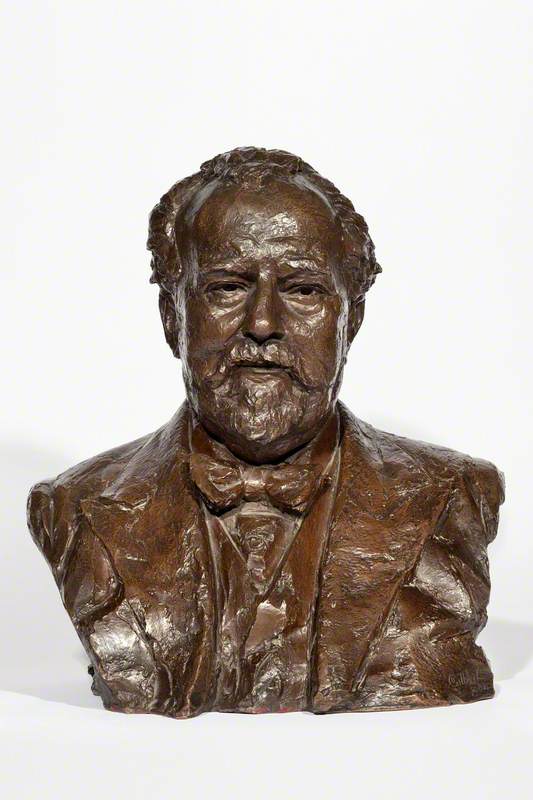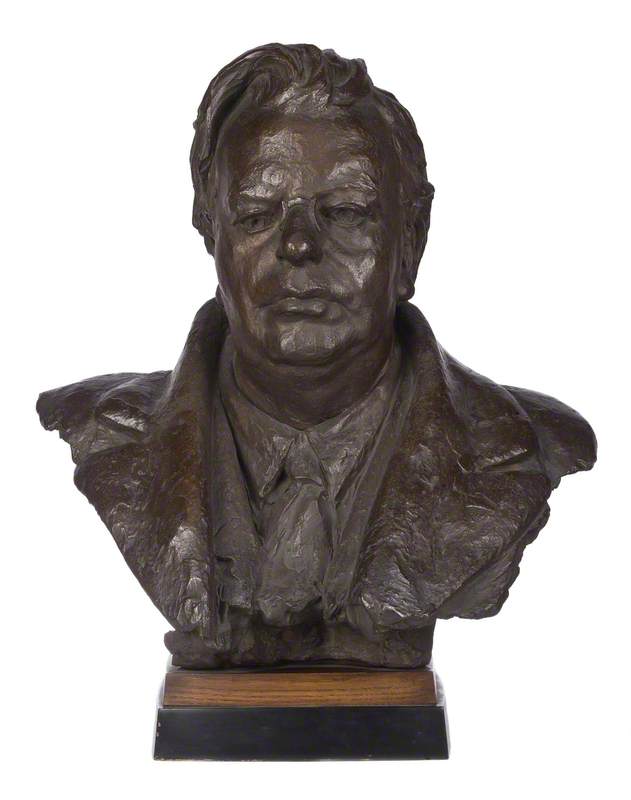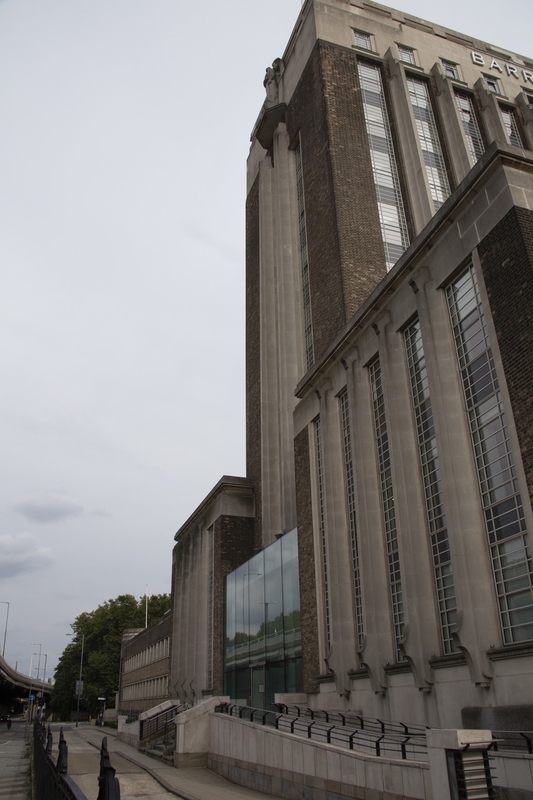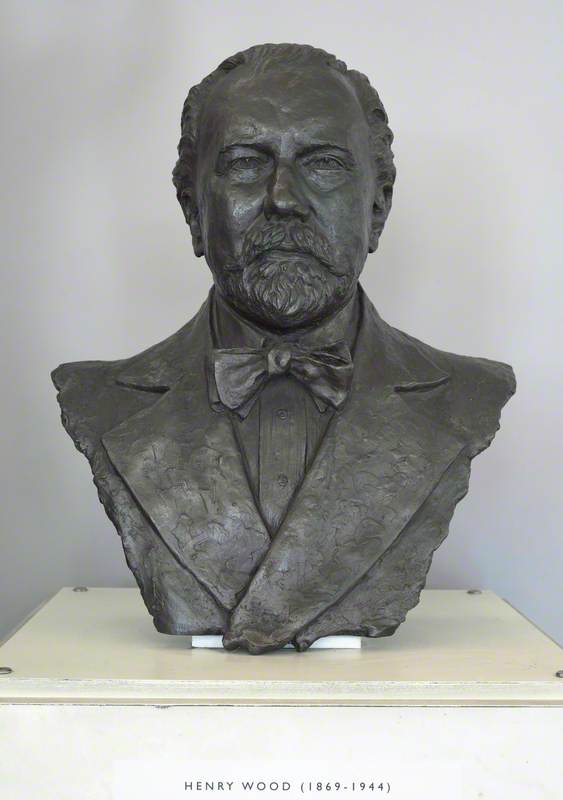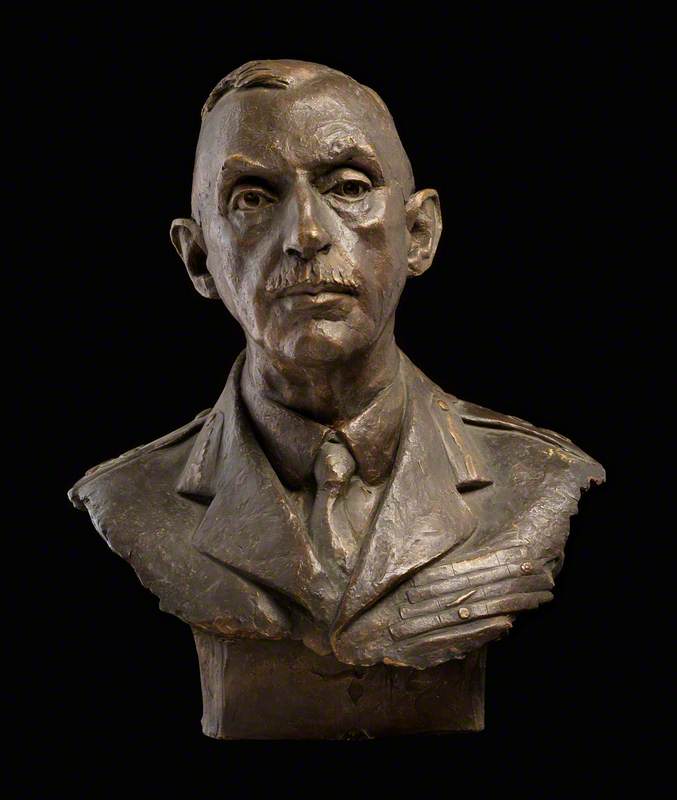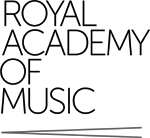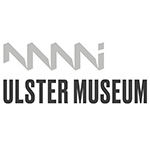Hubert Donald MacGeogh Gilbert [commonly known as Donald Gilbert] was born the son of the sculptor Walter Gilbert (1871-1946) in Burcot, near Bromsgrove, Worcestershire, England, on 29 November 1900. He trained as an artist with his father and with the sculptor Sir Alfred Gilbert (1854-1934). He also studied at Birmingham Central School of Art and, from 1922 to 1927, at the Royal Academy Schools in London, where he was taught by William Reid Dick and Henry Poole, and where he was awarded bronze and silver medals. He also studied in Rome and Florence. He subsequently worked as a sculptor and as a ceramic artist.
Gilbert first exhibited at the Royal Academy in London in 1925 and continued to do so regularly until 1957. He also exhibited at the Royal Birmingham Society of Artists; Royal Glasgow Institute of the Fine Arts; Walker Art Gallery in Liverpool, Royal Hibernian Academy in Dublin, Royal Scottish Academy in Edinburgh; and at the Chenil Galleries in London.
He produced ceramics for Denby Pottery and Ashtead Potters Ltd. Among Gilbert’s best-known works are ‘Inspiration to Flight’ for the BOAC building in Brentford, and busts of the conductor Sir Henry Wood (1938), the pioneer of television John Logie Baird (1943) and the composer Sir Edward Elgar. He was represented in the ceramics section of the 'Britain Can Make It' exhibition held at the Victoria and Albert Museum, London, in 1946, and carved a series of limewood panels for the Balmoral Restaurant on R.M. Caronia in 1947. His principal sculptural work is considered to be a 'Night', a carving for the Adelphi Building on John Adam Street, in London (1937). He sometimes collaborated with his father on sculptural projects.
He was elected an Associate of the Royal Society of British Sculptors (ARBS) in 1931; an Associate of the Royal Birmingham Society of Artists (ARBSA) in 1936; a full member of the Royal Birmingham Society of Artists (RBSA) in 1937; and a Fellow of the Royal Society of British Sculptors (FRBS) in 1943.
Gilbert's address was given as 8 Calthorpe Road, Edgbaston, Birmingham in 1921 and 1922; 9c Kensington Crescent, London in 1925; 60 Iverna Court, Kensington, London in 1927; 17 Palace Gardens Mansion, The Mall, Kensington, London in 1928; 93 Holland Road, Kensington, London and 10 Aubrey Road, Campden Hill, London in 1929 and 1930; 9 Pembroke Gardens, Kensington, London in 1934 and 1937; and Nobys Planted Fields, Bedham, Wisborough Green, West Sussex in 1944 and 1958. He died on 17 June 1961.
Text source: Art History Research net (AHR net)

